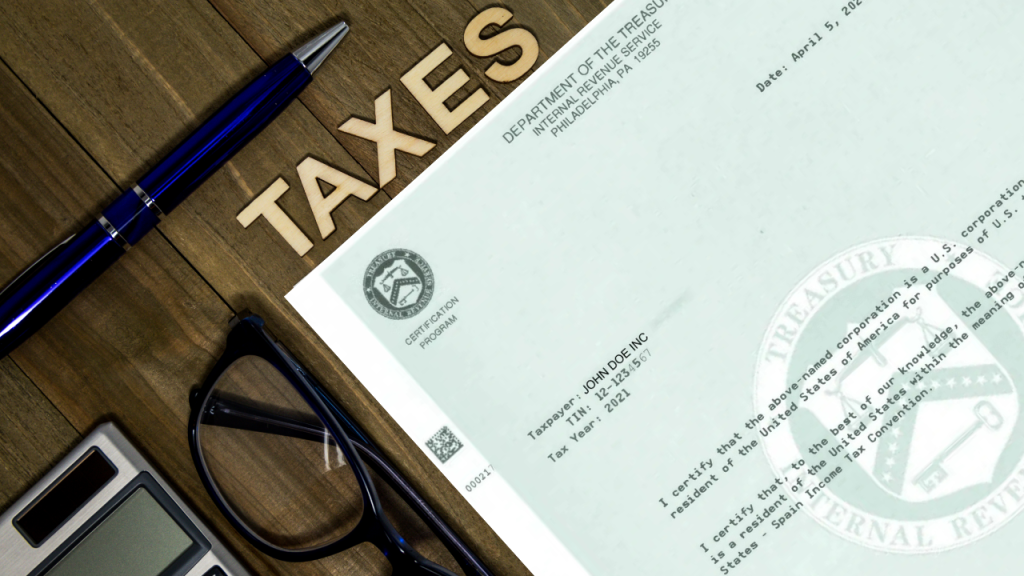Planning to invest globally or earn income from abroad? If you’re a Non-Resident Indian (NRI), one key document can help you avoid paying taxes twice and ensure smoother international financial operations — the Tax Residency Certificate (TRC).
In this blog, we’ll break down what a TRC is, why it’s crucial for NRIs, who can apply, how to get one, and how it helps you claim tax treaty benefits like reduced withholding taxes.
In This Article
What is a Tax Residency Certificate (TRC)?
A TRC is an official document issued by the tax authority of your resident country. It confirms that you’re a tax resident of that country for a given financial year. This certificate contains essential details like your name, nationality, Tax Identification Number (TIN), residential status, and its validity period.
It’s required when you want to claim tax benefits under Double Taxation Avoidance Agreements (DTAAs) between two countries, such as India and the U.S.
Why Do NRIs Need a TRC?
As an NRI, if you earn income both in India and abroad—like foreign salary, capital gains, or dividends—a TRC helps prevent you from getting taxed twice on the same income. It’s a must-have for taking full advantage of DTAAs.
Without a valid TRC, you might end up paying full taxes in both countries and miss out on deductions or exemptions you’re entitled to.
Who is Eligible to Apply?
You’re eligible for a TRC if you are a tax resident of a particular country. Tax authorities usually determine this based on:
- The number of days you’ve stayed in the country
- Whether it’s your permanent home
- Where your financial and personal interests are centered
For example, U.S. residents need to file Form 8802 to get a TRC from the IRS, while Indian residents must use Form 10FA.
Documents Required for TRC
To apply, you typically need:
- A valid passport copy
- Recent tax returns
- Proof of residence
- Tax Identification Number (TIN)
- A completed application form (Form 8802 for U.S., 10FA for India)
How to Apply for a TRC
The process is straightforward but must be done carefully. Submit your application to the tax department in your country of residence. If you’re in the U.S., you apply through the IRS using Form 8802. After processing, they issue Form 6166 as your TRC.
In India, once you submit Form 10FA and meet eligibility, the authorities will issue Form 10FB.
Tip: Start your application at least 45 days in advance to avoid delays.
Benefits of Having a TRC
A TRC offers NRIs several important tax advantages:
- Avoid Double Taxation: You only pay tax in one country, not both.
- Lower Withholding Tax: NRIs investing in Indian assets may pay a reduced rate on interest, dividends, and royalties.
- Access to DTAA Benefits: TRC acts as proof when you apply for DTAA-based reliefs with Indian or foreign tax departments.
- Simplified Compliance: Easier documentation and fewer disputes with international tax authorities.
Validity and Renewal
A TRC is usually valid for one financial year. Since different countries have different financial year calendars (e.g., Jan–Dec in the U.S. and Apr–Mar in India), plan accordingly.
Start the renewal process before the certificate expires—generally after December 1 of the prior year. Renewal involves submitting updated documents and a new application form.
Processing Timeline and Fast-Track Options
Standard processing takes around 4–6 weeks, depending on the country. If there’s an urgent need due to medical, financial, or government-related reasons, you may be eligible for expedited processing with proper documentation.
Be cautious with multiple fast-track requests—they could actually slow down your case.
How to Use Your TRC Correctly
Once issued, you can use your TRC to:
- Claim lower tax rates on income from India or any country that has a DTAA with your country of residence
- Avoid double taxation on foreign income
- Provide proof of residency when dealing with financial institutions or tax authorities abroad
Just remember, every country interprets TRCs differently. Make sure you understand local rules, or better yet—consult with a tax advisor familiar with both Indian and international tax laws.
Managing income across borders can be tricky, but the Tax Residency Certificate simplifies it. It not only proves your residency for tax purposes but also helps you unlock reduced tax rates, avoid double taxation, and stay compliant.
Apply early, renew on time, and always keep your documentation updated to enjoy uninterrupted tax benefits.


